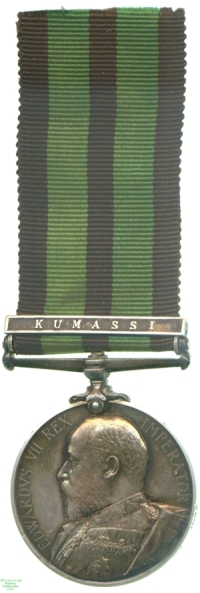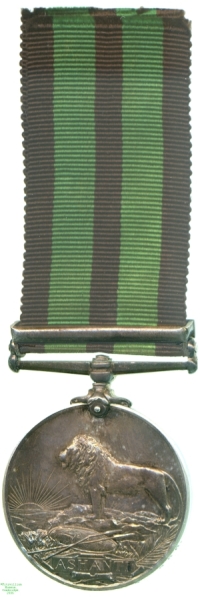
Obverse, a bust of King Edward VII

Reverse, the British lion standing on a rock at the left watching the sunrise; a shield and two assegais below

Obverse, a bust of King Edward VII |

Reverse, the British lion standing on a rock at the left watching the sunrise; a shield and two assegais below |
After the deposition of King Prempeh I of the Ashanti in the campaign of 1896, considerable ill-feeling in the country towards the British led to a decision to capture the Golden Stool which symbolised Ashanti royal power. This attempt, carried out in early 1900, was thwarted by the Ashanti chiefs and the people promptly rose against the British, besieging the Governor in the capital of Kumase, now in Ghana. After a month, relief forces got through to the starving British garrison, but due to shortage of available troops had to leave another garrison to stand a further month's siege shortly afterwards, and another after that relief force too had to depart in July. The rising was eventually finally suppressed in December 1900. Because of the simultaneous Boer War, the campaign was fought almost entirely by local African troops, very few of whom were officially considered soldiers, such troops only making a total of around 750 enrolled men of all nations. Unofficial forces were rather larger, but the casualty list of the campaign still numbered 62 European officers and no fewer than 800 Africans.
This medal was awarded to participants in the campaign as a whole, but the bar for Kumassi indicates that the recipient was either one of the defenders in the several sieges of Kumase, or a member of one of the relief expeditions, or as was quite possible both.
Two versions of this medal were struck, one in higher relief than the other; this is the high-relief version.
It was awarded to Private Iddrisue Moshi of the 2nd Battalion of the Gold Coast Constabulary. Lester Watson acquired it at some point before 1928.